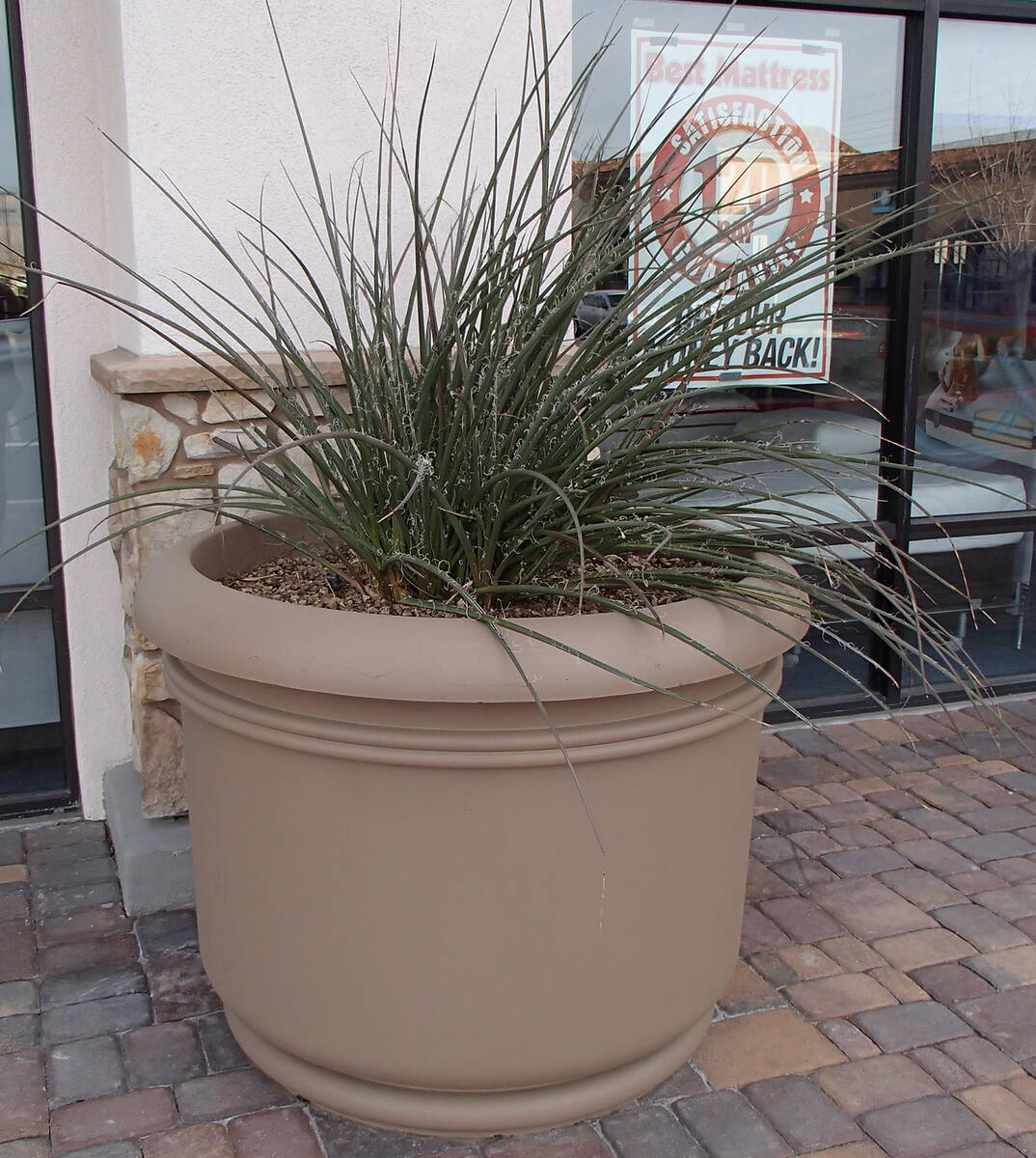Transplant to Las Vegas puzzled by lack of growing luck
Q: About seven years ago, we moved to Las Vegas from Seattle. There, it was easy to root plants like purple passion, purslane and avocado in water. I did it any number of times. Here, I haven’t had any luck trying to root them in water or in potting soil even with rooting powder. I have tried tap water and our purified water, and even tried rainwater I collected. I’m puzzled as to why it won’t work here. Any suggestions?
A: Two of the common differences between Seattle and Las Vegas are the soil and air temperatures. Try rooting these cuttings inside the house and in potting soil.
Water propagation:
■ Cut stems one-third to half an inch in diameter, about 4 inches long.
■ Let the cutting callous over for a day or two inside to prevent rot.
■ Remove half of the bottom leaves and stems to expose part of the main stem.
■ Submerge the cut end of the stem in filtered water so that the leaves are above water.
■ Place the cutting in a spot with indirect sunlight and change the water every few days to keep it fresh.
■ After a few weeks, roots should appear.
Soil propagation:
■ Fill a tray or 4-inch pot that’s at least 3 inches deep with potting soil. After cutting them, let them heal over for a couple of days inside the house. The ideal size of a cutting is three-eighths of an inch in diameter.
■ Remove the bottom half of the stem of leaves.
■ As insurance, apply a small amount of liquid rooting hormone to the bottom half of the stem (minus the leaves).
■ Stick the cutting 3 inches deep into the medium and moisten it.
■ Cover with clear plastic and place in a warm, bright spot but out of direct sunlight.
■ Keep the soil moist but not soggy. Don’t suffocate the roots. Let them breathe.
■ When you see new growth, roots have appeared.
Q: We are taking out an orange tree that has never produced oranges and putting a shed in that spot. How deep do we have to cut the roots so the tree will not grow back? Will putting RoundUp on the roots that are left keep it from growing?
A: Dig the trunk out about 1 inch below the surface of the soil. The tree will not come back. If there are some root suckers that pop up, then apply RoundUp on them as they get leafy but while it is still cool. But the application of RoundUp should not be necessary for most orange trees. Wear protective clothing when spraying.
Q: What am I doing wrong to cause my king sago palm to yellow?
A: King sago palm is actually a cycad, not a palm even though it is called one. It prefers growing on the east or north side of a home, not the hotter west and south sides. It is not a desert plant, though local nurseries will sell it as such. Secondly, it prefers growing in organic soil, not desert soil. A desert soil should be enriched.
What to do now? Rake the gravel back during the cooler morning hours until you see soil. Add compost (mix in the compost and an iron fertilizer) to the top of the soil and rake it in. Iron EDDHA is a light-sensitive chelate, so make sure to cover it. Then water it. Rake the rock back and cover all of it. Do that once a year in the spring or fall when it is cooler.
Q: Should I set my watering schedule to every day during this heat wave?
A: Try not to. If you feel you must, then give them only sips of water.
Rely on the 40-30-20-10 rule for plants above 3 feet tall and perennial plants. (The rule states that tree roots get about 40 percent of their water from the top fourth of their roots, then 30-20-10 percent until about 50 percent is gone, before the next irrigation.) Water only very short plants (and only when they are showing signs of water stress).
Q: I am the vide president of an HOA with over 2,000 Mondell pines and several hundred other species as well. In anticipation of implementing the AB356 xeriscape mandate we want to have our trees appraised, as we have already seen the negative impact of xeriscape conversion on trees where we have converted 500,000 square feet of grass. Do you conduct appraisals of trees, or can you suggest an appraiser?
A: I don’t do tree appraisals, but any of the 30 or so certified arborists in the Las Vegas area would. Look them up and get at least three bids. Make sure they are insured and check their credentials.
Q: I have a large pot on the side of the garage that gets mostly shade. What should I buy that will thrive in it?
A: How large is the pot and what is its shape? Can it be comfortably moved if it is half full of water? A good potting soil will be nearly half full of water immediately after irrigation. When it needs water, it will be about 25 percent of that weight if it is mesic — less if it is xeric, or desert adapted.
Its shape will dictate what kind of plant will grow in it. If it is a tall or deep container then put a small tree in it. If it is short and squat, then put several smaller plants in it.
Shade makes it more complicated. Flowering plants need at least six hours of full sun to flower. With less than that, look for leafy green plants that can handle that kind of shade.
Bob Morris is a horticulture expert and professor emeritus of UNLV. Visit his blog at xtremehorticulture.blogspot.com. Send questions to Extremehort@aol.com.


















